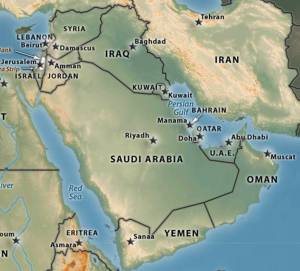 The Middle East, and in particular, the Gulf Cooperation Council[GCC] countries of United Arab Emirates, Saudi Arabia, Kuwait, Qatar, Bahrain and Oman, is a region of thriving economies that are embarking on ambitious programs of investment and reform to meet the challenging demands of a rapidly growing, talented, enthusiastic young population.
The Middle East, and in particular, the Gulf Cooperation Council[GCC] countries of United Arab Emirates, Saudi Arabia, Kuwait, Qatar, Bahrain and Oman, is a region of thriving economies that are embarking on ambitious programs of investment and reform to meet the challenging demands of a rapidly growing, talented, enthusiastic young population.
Since 1998, the GDP of GCC countries has expanded by an annual average of 5.2% and by a cumulative total of 68%. The population has seen an increase in the same period from 28m to 39m. The GCC economies are seen not only as exporters of oil and gas but as investment destinations with major infrastructure projects, booming tourism and financial services.
There is no denying the meltdown in global financial markets, the drop in oil prices and slowdown in economic activity in key trading partners has affected the GCC economies. Yet, the region is expected to recover more quickly than others due to sound economic policies, supported by demographics and energy advantages and substantial investments already underway.
 In their report “The GCC in 2020” , the Economist Intelligence Unit forecast that the region will grow in importance as an economic and trading hub. The report suggests that the region will be a $2 trillion economy by 2020, providing nearly one quarter of the world’s oil supplies as well as increasing quantities of petrochemicals, metals and plastics.
In their report “The GCC in 2020” , the Economist Intelligence Unit forecast that the region will grow in importance as an economic and trading hub. The report suggests that the region will be a $2 trillion economy by 2020, providing nearly one quarter of the world’s oil supplies as well as increasing quantities of petrochemicals, metals and plastics.
GCC spending on infrastructure projects is likely to reach $3.5 trillion over the next decade. Healthcare spending in the region is expected to reach $ 50 b in 2020 up from
$12 b today. In 2009 alone, the GCC countries are expected to spend close to $35 b on energy projects and another $35 b on water and power projects.
Opportunities:
Canada and Canadian products enjoy a strong brand image across the GCC countries, vindicated by a tripling of exports over the last 5 years. Annual bilateral trade with the region is around $4.5 b, with merchandise exports reaching $2.4 b in 2008. These include machinery & equipment, cereals, aviation products, electric and electronic equipment and precious stones and metals. The oil and gas industry provides the obvious opportunity but there is substantial demand for products and services in infrastructure development, construction, healthcare, education, environmental technologies, financial services, food, tourism, sports and leisure sectors.
In addition, major programs of reform are underway to create appealing, competitive and efficient business climates. There is more of a level playing field between foreign and local companies and in many cases, the legal requirements to tie up with local partners has been removed.
